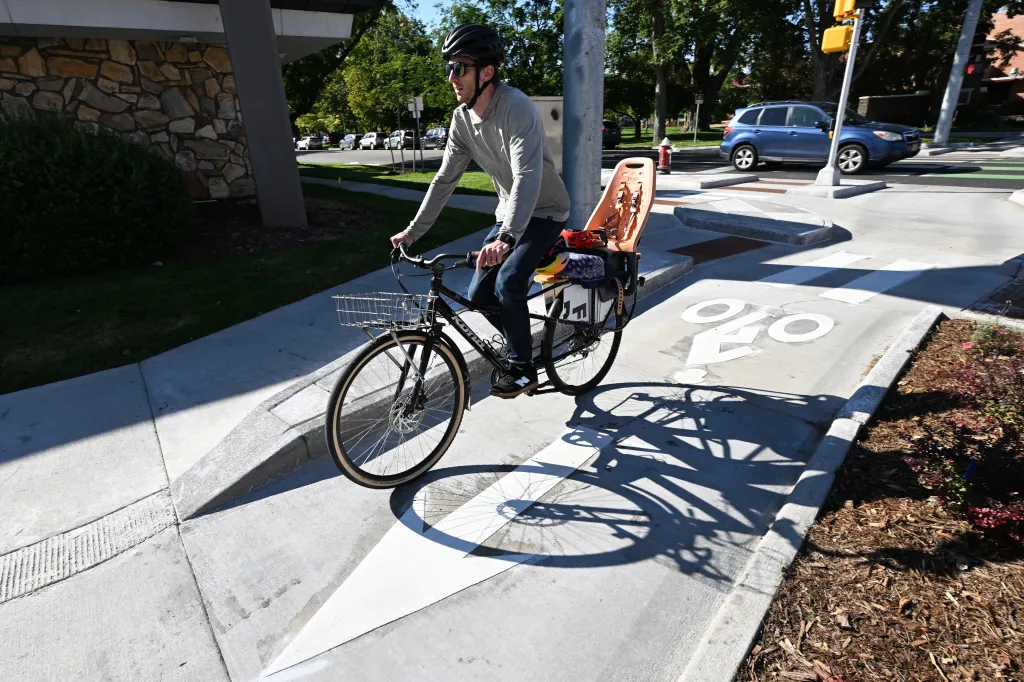
The Longmont City Council adopted Vision Zero in 2023 with the goal of reducing traffic deaths and severe injury crashes on the city’s roads to zero. Two years later, and one year into the campaign, they’re still waiting on federal funding to move forward with projects that will help the city accomplish that goal.
Dylan Zamora Silva, the program’s community engagement specialist, said the funding is “long overdue.”
“We need to start getting more funding on the Safe Streets and Roads for all grant, which was awarded to us in 2024, but obviously, with federal funding, there’s been some delays,” Zamora Silva said.
The city was awarded $1.2 million under the U.S. Department of Transportation’s Safe Streets and Roads for All program to develop the Vision Zero Equitable Action Plan.
The money was going to help pay for demonstration projects focused on lowering vehicle speeds, especially in places where motor vehicles mix with “vulnerable road users,” such as youth, seniors and people with disabilities, Longmont Vision Zero Coordinator Cammie Edson said in a statement at the time.
From 2015 through 2024, there were 62 fatal crashes in Longmont, according to data from the Colorado Department of Transportation. So far this year, there have been two fatal crashes on city roads and one just outside of the city at the Colorado 66 and Hover Street intersection, according to reporting from the Times-Call.
As part of the Vision Zero program, a task force was created to give community feedback. The task force of about a dozen volunteers held its first meeting in October 2024, but is waiting for the federal grant to begin planning specific projects.
“It’s not to say that work has not started, but I think as we really bring in this action plan concept, and really start bringing the community in to focus on that… we want to make sure that we have funds so we can actually, essentially deliver this project to Longmont,” Zamora Silva said.
Once the group does receive the grant money, they’ll have the “green light” to begin narrowing down and identifying specific projects and areas to include in their action plan.
Zamora Silva expects that process will go into next summer.
The group has gathered data about Longmont’s roads and previous crashes. A city map shows Ken Pratt Boulevard, Main Street and Hover Street as roads with the highest density of fatal and serious injury crashes.
“When you have the data, you’re able to make decisions a lot more efficiently, and you’re able to really hone down on and prioritize, too, which areas need to be improved in order to save lives,” Zamora Silva said.
Once the planning process and, eventually, road improvements begin, education will be an important part, Zamora Silva said.
“We will have improvements to the built environment itself, but it’s the people that are behind the wheel,” he said. “Making sure that people understand the behavioral impacts of driving safely, I think that’s going to be more of a holistic approach.”
Education has been something the group has been able to do without the grant money. So far, the Vision Zero Task Force has hosted workshops, visited a construction site and led residents on a walk through Longmont aimed at teaching residents how to spot road safety concerns. Residents visited the Longs Peak Avenue and Coffman Street intersection, where an engineer explained the protected intersection, which has physical barriers aimed at keeping bicyclists and pedestrians safer when crossing intersections.
“That really connected the concepts from a workshop to this physical experience of (the) protected intersection on Longs Peak and Coffman,” Zamora Silva said.
That project was completed earlier this year as part of the city’s Coffman Street Mobility Improvements project, which began construction along Coffman Street in June 2024.
While they await funding, the group plans to continue meeting and hopes to receive an update on the status of the grant funding soon.
“It’s less predictable than it has been, so I think that’s kind of what we have to accept in case we need to come up with a different plan, but I think right now it’s looking promising, so we’re optimistic,” Zamora Silva said.



